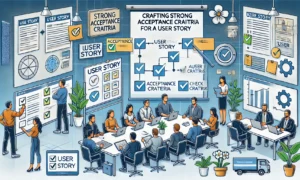In product management, decision-making is a critical skill that influences the success of a product and the morale of the team. While product managers often work in high-pressure environments with tight deadlines and competing priorities, fostering transparency and trust in decision-making ensures alignment, reduces friction, and builds a collaborative culture.
Here’s a guide to making product decisions that prioritize transparency and cultivate trust within your organization.
1. Establish Clear Decision-Making Frameworks
A structured approach to decision-making provides clarity and ensures all stakeholders understand how decisions are made. Frameworks like RICE (Reach, Impact, Confidence, Effort) or DACI (Driver, Approver, Contributor, Informed) can simplify the process.
- Why it Builds Trust: Frameworks create a shared language for decision-making, minimizing subjectivity.
- Pro Tip: Use tools like Miro or Jira to visually represent decision frameworks, making it accessible to all team members.
2. Involve the Right Stakeholders
Decisions should not be made in isolation. Identify and involve relevant stakeholders early, including design, engineering, marketing, and sales teams, to gather diverse perspectives.
- Why it Builds Trust: Inclusive processes ensure everyone feels heard, even if the final decision doesn’t align with all opinions.
- Case Study: At Slack, product managers frequently conduct user research sessions where cross-functional teams are invited to observe, fostering shared ownership of product insights.
3. Document and Communicate Decisions
Documenting decisions ensures transparency and creates a reference point for future discussions. Use tools like Confluence, Notion, or Google Docs to maintain a central repository of product decisions.
- Why it Builds Trust: Open access to decision documents demonstrates accountability and reduces misunderstandings.
- Best Practice: Include the “why” behind decisions, highlighting trade-offs and considerations to provide context.
4. Embrace Data-Driven Decisions
Leverage user research, analytics, and feedback to inform decisions. While intuition and experience are important, data adds objectivity and builds confidence in the rationale.
- Why it Builds Trust: Data-backed decisions are harder to contest, fostering a sense of fairness.
- Example: Spotify uses A/B testing to validate feature ideas, ensuring decisions are informed by user behavior rather than assumptions.
5. Be Transparent About Constraints
Every product decision has constraints, whether related to resources, timelines, or strategic goals. Being upfront about these limitations helps manage expectations.
- Why it Builds Trust: Acknowledging constraints shows that decisions are pragmatic and aligned with broader business realities.
- Real-World Tip: Share these constraints during roadmap discussions to prevent misalignment down the line.
6. Facilitate Open Discussions
Encourage healthy debate and feedback during decision-making processes. Create a culture where team members feel safe challenging assumptions and offering alternative perspectives.
- Why it Builds Trust: Open dialogue fosters mutual respect and ensures diverse viewpoints are considered.
- Actionable Tip: Use retrospectives after major product launches to discuss what went well and where decision-making processes could improve.
7. Commit to Decisions and Follow Through
Once a decision is made, communicate it clearly and stick to it unless new information warrants a change. Wavering or frequent reversals can erode trust and create confusion.
- Why it Builds Trust: Consistency in execution reinforces the credibility of the decision-making process.
- Leadership Insight: Companies like Amazon use the “Disagree and Commit” approach to ensure alignment even when consensus isn’t fully achieved.
8. Measure and Share Outcomes
After implementing a decision, evaluate its impact against predefined metrics. Share results openly with the team, celebrating successes and learning from failures.
- Why it Builds Trust: Transparency in outcomes shows that decisions are data-informed and iterative rather than final and unchangeable.
- Example: Airbnb regularly shares key learnings from product experiments across the organization, promoting a culture of shared learning.
9. Be Willing to Admit Mistakes
Not every decision will be perfect. When a decision doesn’t work as expected, acknowledge it and pivot quickly. Demonstrating humility builds credibility.
- Why it Builds Trust: Owning mistakes shows accountability and a willingness to prioritize the product’s success over ego.
- Cultural Insight: Pixar famously embraces post-mortems after each film, analyzing failures to improve future processes.
10. Continuously Improve Decision-Making
Treat decision-making as an evolving skill. Gather feedback from stakeholders on the decision-making process itself and iterate on it regularly.
- Why it Builds Trust: Iteration demonstrates a commitment to transparency and inclusion, reinforcing trust over time.
- Practical Step: Conduct quarterly reviews of key decisions with stakeholders to evaluate the process and outcomes.
Conclusion
Building transparency and trust in product decision-making isn’t just about the decisions themselves but the processes and culture that surround them. When teams feel included, informed, and respected, they’re more likely to support decisions wholeheartedly, even when challenges arise.
By implementing structured frameworks, fostering open communication, and embracing accountability, product managers can not only make better decisions but also cultivate an environment of trust that drives long-term success.



